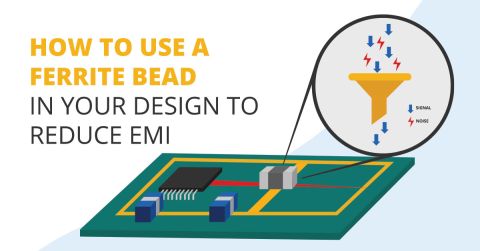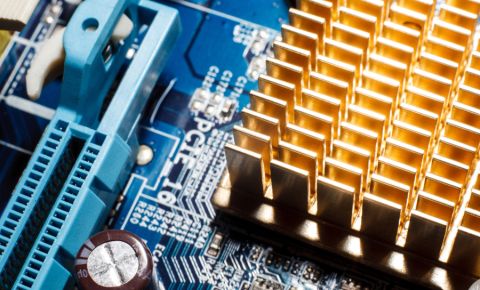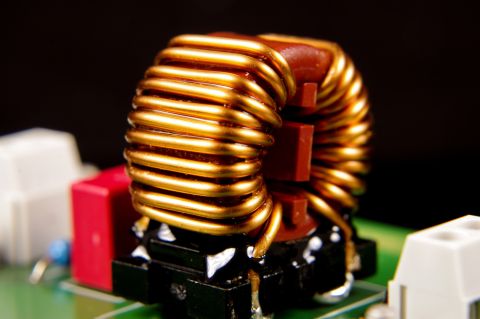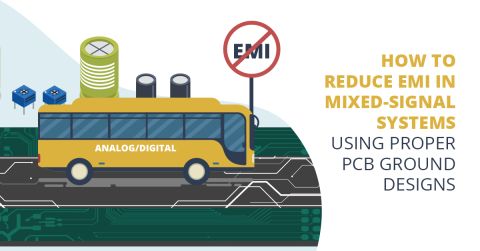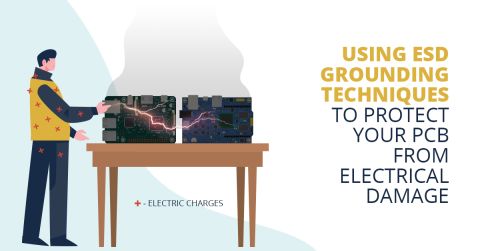Mastering EMI Control in PCB Design: Component Placement for EMC

Mastering EMI Control in PCB Design Series
Component Placement for EMC
| October 2, 2024In this second article of the Mastering EMI Control in PCB Design series, we will dive deeper into one of the key concepts for maintaining low levels of electromagnetic interference (EMI).
Board segregation, also known as board partitioning, is a method used to organize the different circuit parts of a Printed Circuit Board (PCB) to keep them separate. This improves the overall performance of the board, particularly in terms of EMI. This technique not only helps reduce electromagnetic interference but also enhances the signal integrity of the PCB design.
The principles behind these techniques include:
- Containing the high-energy content of high-frequency digital signals.
- Avoiding common-impedance coupling between different types of circuits within the board.
- Reducing current loop areas to decrease emissions and improve immunity to external interference.
High-Speed vs. Low-Speed Signals and Their Harmonics
The first concept involves controlling the high-energy harmonic content produced by rapidly switching signals and how quickly their current changes over time. A higher rate of current change results in greater harmonic energy in the signals, increasing the likelihood of radiation.
The second concept is that the return current of a signal varies with the signal's frequency. This is because the impedance a signal encounters during propagation consists not only of the resistance of the conductors but also their capacitance and, most importantly, their loop inductance. As the signal frequency increases, the inductive component of the impedance (which depends on frequency) becomes larger.
Differences in Return Paths
Since current always seeks the path of least impedance, it’s important to understand that as the signal frequency increases, the return current closely follows the signal current to minimize the inductive loop. Conversely, at low signal frequencies, where the inductance becomes small, the resistive component of the impedance becomes predominant.
At this stage, the return current spreads throughout the conductor's surface to find the path of least resistance. The critical point for PCB designers is that the return current’s path back to the source depends on the signal frequency.

Figure 1 - Example of different return current path based on frequency in Altium Designer
Our job as PCB designers is to minimize interference between these return currents to avoid common-impedance coupling, which can lead to electromagnetic emissions. To achieve this, we can create specific zones or sections in the PCB, each dedicated to a particular type of circuitry. This also reduces current loops, leading to less radiation from differential-mode currents.
It might seem tempting to create a split in the Return Reference Plane (RRP) to further isolate the return current paths from different circuits. However, this approach does not follow best practices for EMC because it creates a voltage difference between two metal areas, forming an antenna-like structure that can cause electromagnetic emissions.

Figure 2 - Example of an incorrect plane split in Altium Designer
The solution is to implement a solid, low-impedance return reference plane that allows the return current to find the preferred path back to the source. This plane should have no cuts, splits, or large gaps that can act as sources of common-mode noise. Component placement should then be divided into distinct sections by distributing the components based on their type of circuitry and function.
For a mixed-signal board, the typical segregation is to divide the board into a digital section, a power section, an analog section, an input/output section, and, when necessary, a filtering section. The digital section, for instance, should be placed far from other components. Although the return current will closely follow the signal traces, the high energy in the harmonic content of the signals will radiate more effectively and could couple with other sections of the board.
An example of this is when the clock signal couples to other nets in other parts of the board, such as the power and analog sections, which may have cables connected to them that act as antennas, promoting emissions.
Antenna Structures with Cables
The input/output section is crucial, not only to limit noise injection into the cables but also to allow further isolation through filtering techniques and shielding to reduce external interference or limit noise emissions from the board. The layout must consider cables and surrounding devices or structures. The digital section should be placed far from this input/output area, ideally in the interior of the board, away from the edges, to avoid coupling high-energy harmonic content to cables or radiating from the edges.

Figure 3 - Example of an incorrect plane split in Altium Designer
Additionally, it is recommended to place all input and output cables on one side of the board instead of multiple edges, preventing voltage differences between the cables and avoiding antenna-like structures that can promote radiation of digital signals or noise.
Conclusion
By following these recommendations, you can effectively reduce radiated emissions and limit the coupling of external interference into your design.
In the next article, we’ll explore how to select the optimal PCB stackup for improved EMI performance and reduced risk. Be sure to follow our pages and social media for more insights.
Achieving these high standards in PCB design requires a suite of tools that provide precise control over every aspect of your design. Altium Designer® offers a comprehensive set of PCB design, layout, and simulation features, ensuring your designs meet all requirements and simplifying the board partitioning process.
The integrated design rules engine and online simulation tools help verify conformance to your design specifications as you route your PCB, ensuring the highest design standards. Upon completion, you can seamlessly release files to your manufacturer using the Altium 365™ platform, simplifying collaboration and project sharing.
You can start your free trial of Altium Designer® + Altium 365™ today and bring your PCB designs to the next level.


